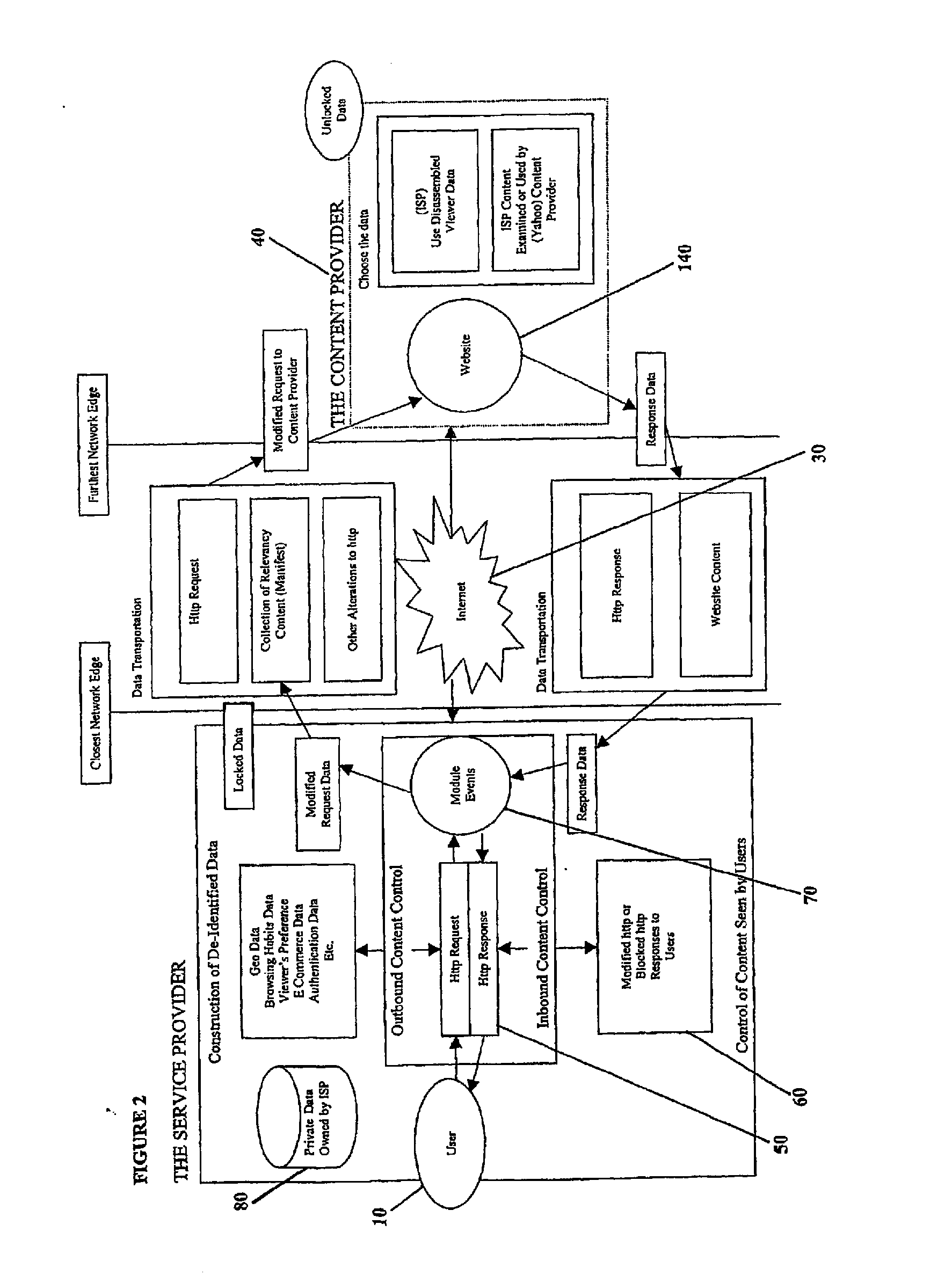Method and system to aggregate data in a network
a network and data technology, applied in the field of distribution of content on a wide area network, can solve the problems of annoyance and unwanted results of users of the internet, overwhelmed by popup windows, and unable to meet the needs of customers, so as to improve customer communication, enhance the internet browsing experience of customers, and generate new sources of revenue.
- Summary
- Abstract
- Description
- Claims
- Application Information
AI Technical Summary
Benefits of technology
Problems solved by technology
Method used
Image
Examples
Embodiment Construction
Definitions
[0030] In this document, including the claims, the following terms have the following meanings:
[0031]“browser” means a program operable on a computer, used for accessing web sites or information on a network;
[0032]“computer” means a programmable electronic device that can store, retrieve, and process data and that can transmit information to or from other computers;
[0033]“content provider” means an entity that provides content for the Internet, such as a web site. Content providers may provide or distribute advertisements on the Internet, for example by using an advertising server. Examples of content providers are advertising servers, advertising distributors and host servers;
[0034]“Internet” means an electronic communications network that connects computers, computer networks and organizational computer facilities around the world and includes the World Wide Web;
[0035]“service provider” or “network owner” means an entity that provides users the opportunity to acc...
PUM
 Login to View More
Login to View More Abstract
Description
Claims
Application Information
 Login to View More
Login to View More - R&D
- Intellectual Property
- Life Sciences
- Materials
- Tech Scout
- Unparalleled Data Quality
- Higher Quality Content
- 60% Fewer Hallucinations
Browse by: Latest US Patents, China's latest patents, Technical Efficacy Thesaurus, Application Domain, Technology Topic, Popular Technical Reports.
© 2025 PatSnap. All rights reserved.Legal|Privacy policy|Modern Slavery Act Transparency Statement|Sitemap|About US| Contact US: help@patsnap.com



